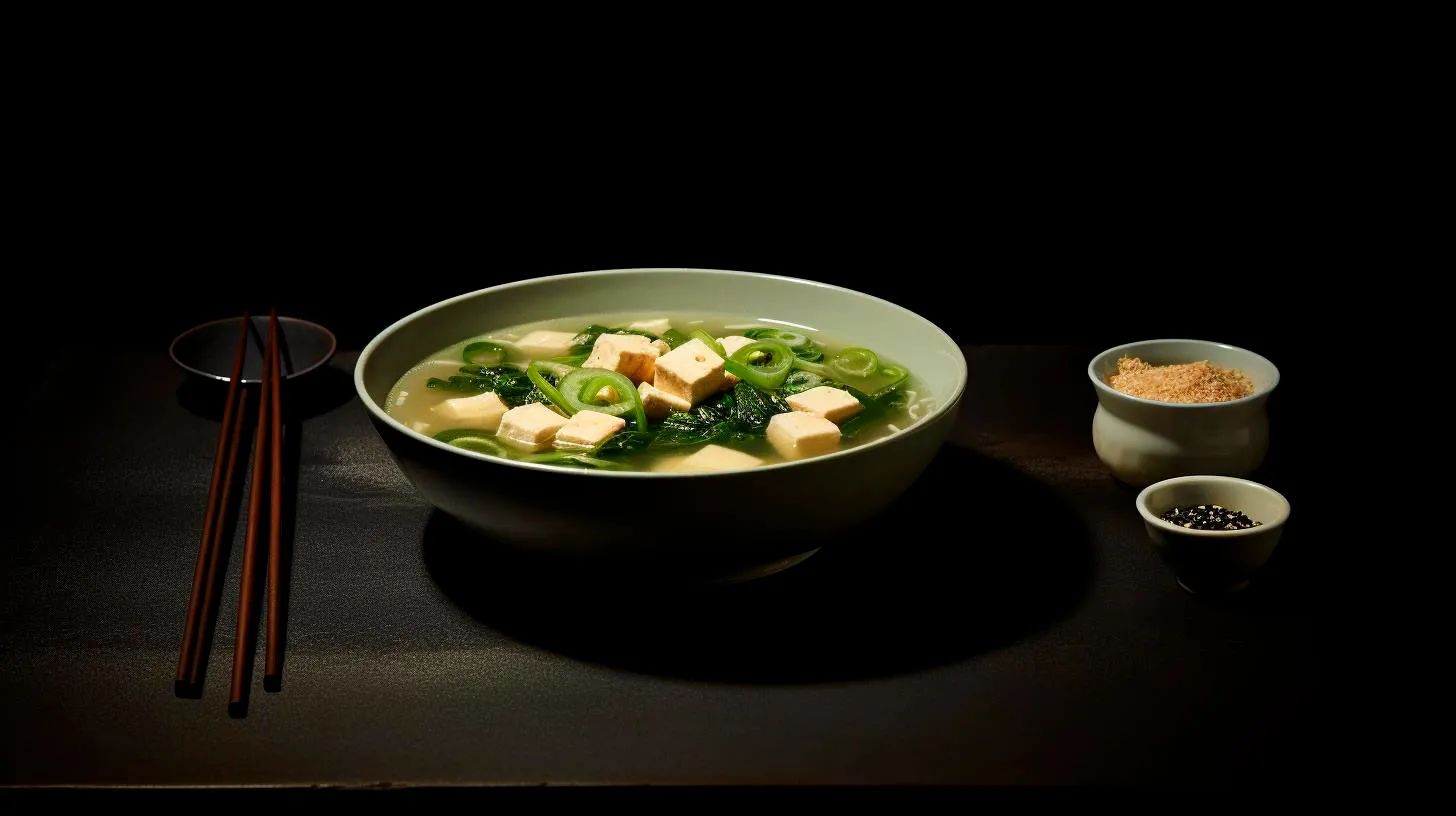Exploring the Crucial Influence of Temperature on Sushi Delights
While various factors contribute to the delectable taste of sushi, one often overlooked element is the role temperature plays in enhancing its flavors. In this article, we will delve into the crucial influence of temperature on sushi and how it affects your dining experience.
The Temperature Spectrum: Chilled and Room Temperature Sushi
Sushi can be broadly categorized into two temperature spectrums: chilled and room temperature sushi. Each category offers a distinct taste profile and experience.
Chilled Sushi
Chilled sushi, as the name suggests, is served at a cooler temperature. This type of sushi includes options like nigiri and sashimi, which are often chilled or even slightly frozen to maintain their freshness. The primary advantage of chilled sushi is the preservation of the delicate flavors and textures of the fish. Freezing the fish at lower temperatures helps retain its natural juices, preventing it from becoming dry and tasteless. With chilled sushi, you can relish the true essence of the fish, allowing it to melt in your mouth.
- Chilled sushi retains the freshness and natural flavors of the fish
- Enhanced texture and tenderness
- Preserves the delicate nature of sashimi and nigiri
Room Temperature Sushi
Room temperature sushi includes popular options like maki and temaki rolls. The rice used in these rolls is seasoned with vinegar, creating a slightly tangy taste. Serving sushi at room temperature allows the flavors to meld together, giving the rice and ingredients a chance to blend harmoniously. The warmth of room temperature also enhances the umami flavors of the ingredients, resulting in a more robust and savory taste profile.
- Room temperature sushi allows flavors to meld together
- Creates a balanced and harmonious taste experience
- Enhances umami flavors of the ingredients
The Impact of Temperature on the Ingredients and Dining Experience
Temperature profoundly impacts not only the flavors but also the overall dining experience of sushi. Let’s explore the various components affected by temperature:
Fish and Seafood
When it comes to sushi, the freshness and quality of the fish are paramount. Temperature control plays a crucial role in maintaining the fish’s quality. Chilling the fish helps prevent the growth of harmful bacteria, ensuring it remains safe to consume. Moreover, chilled fish retains its natural moisture and tenderness, creating a delightful melt-in-your-mouth sensation. On the other hand, room temperature sushi allows the flavors of the fish to shine, offering a pleasing contrast to the warmer rice and vegetables.
- Chilled fish maintains freshness and prevents bacterial growth
- Room temperature sushi allows fish flavors to shine
- Both temperatures offer distinct textures and sensations
Rice
Rice is the backbone of sushi, acting as the canvas to showcase the flavors of the other ingredients. Temperature influences the texture and taste profile of the rice. Chilled sushi with slightly warmer rice enhances the contrast between the cool fish and the rice, adding a refreshing element to each bite. On the other hand, room temperature sushi allows the rice to mellow and blend with the overall flavors, resulting in a more nuanced taste experience.
- Chilled sushi offers a refreshing contrast between cool fish and warm rice
- Room temperature sushi creates a more nuanced taste experience
- Temperature affects the texture and stickiness of the rice
The Perfect Balance: The Art of Temperature Control
Mastering temperature control is an essential aspect of sushi preparation. Sushi chefs meticulously manage the temperature to strike the perfect balance between the ingredients. Here are some intriguing facts to consider:
- Chilled fish is often paired with room temperature rice in nigiri, creating a delightful contrast in textures.
- Temaki rolls are generally served at room temperature, allowing the seaweed wrap to retain its crispness.
- Certain seasonal ingredients are best enjoyed chilled, accentuating their flavors and freshness.
By expertly controlling the temperature, sushi chefs create a symphony of flavors that delights the palate and showcases the essence of each ingredient.
Key Takeaways
Temperature is an often overlooked but crucial factor when it comes to sushi. Here are some key takeaways to keep in mind:
- Chilled sushi retains the freshness and natural flavors of the fish, offering a melt-in-your-mouth experience.
- Room temperature sushi allows the flavors to meld together, creating a harmonious and savory taste profile.
- Temperature affects the quality, texture, and taste of the fish and rice.
- Temperature control is a skillful art mastered by sushi chefs to strike the perfect balance.
Next time you indulge in sushi, pay attention to the temperature and relish the exquisite flavors brought out by the meticulous craftsmanship of sushi chefs.
Unlocking the Secrets of Sushi Texture and Temperature Harmony
In this article, we unravel the secrets behind achieving the perfect balance, giving you a comprehensive understanding of this exquisite art form.
The Crucial Role of Texture and Temperature
Texture and temperature are two fundamental elements that greatly impact the overall sushi experience. Mastering the balance between these two aspects requires precision and attention to detail. Let’s delve deeper into each element and comprehend their significance:
Texture: The Art of Sensory Pleasure
Sushi chefs skillfully craft various textures within a single dish to offer a dynamic and enjoyable sensory experience. Each texture engages specific taste receptors and elevates the overall flavor profile. Here are some key sushi textures:
- Soft and Smooth: Sliced fish with a buttery texture, such as fatty tuna (toro), melts in your mouth and provides a rich, luxurious experience.
- Crunchy: Ingredients like tempura flakes or vegetables add a delightful crunch, creating an exciting contrast to the softness of the rice and fish.
- Chewy: Octopus or squid, when expertly prepared, offer a satisfying chew that complements other textures in the sushi roll.
- Creamy: Seafood delicacies like sea urchin (uni) or scallops possess a delicate creaminess that adds a luxurious and refined texture to sushi.
Temperature: Precision in Culinary Mastery
The temperature of sushi ingredients plays a crucial role in enhancing their flavors and textures. Slight variations in temperature can make a significant difference in the overall taste experience. Here are some key temperature considerations:
- Cool and Refreshing: Ingredients like fresh cucumber, pickled daikon radish, or crunchy lettuce bring a cooling effect to sushi, providing a contrast to warm ingredients.
- Warm and Savory: Grilled ingredients, such as eel (unagi) or teriyaki-marinated fish, add a comforting warmth and intensified flavor to sushi rolls.
- Room Temperature: Sushi rice should ideally be served at room temperature for the perfect balance of flavors. When the rice is too cold, it can mask the flavors of the accompanying ingredients.
Mastering the Art of Texture and Temperature Harmony
Now that we understand the pivotal role texture and temperature play in the sushi experience, let’s explore some essential tips to achieve perfect harmony:
- Choose the right fish: Each type of fish offers a distinct texture and flavor. Experiment with different types to find the perfect combination that harmonizes with temperature.
- Pay attention to rice: Properly cooked sushi rice should have a slightly sticky texture. The rice acts as the foundation for the other ingredients, enhancing the overall taste profile.
- Balance contrasting textures: Incorporate a variety of textures to add depth and excitement to your sushi rolls. Mixing soft and crunchy ingredients can create a harmonious balance.
- Temperature considerations: Take care to maintain the desired temperature of each ingredient. Cold ingredients should be kept cool, while warm elements should be freshly prepared and served immediately.
- Consider seasonality: Seasonal ingredients tend to be at their prime, both in terms of flavor and texture. Take advantage of the natural textures and tastes each season offers.
Key Takeaways
Unlocking the secrets of sushi texture and temperature harmony requires attentiveness and creativity. Here are the key takeaways:
- Texture and temperature are crucial elements that significantly impact the sushi experience.
- Experiment with various textures, such as soft, crunchy, chewy, and creamy, to create an enjoyable sensory experience.
- Consider temperature contrasts to add depth and intensity to the overall taste profile of your sushi rolls.
- Mastering the balance between texture and temperature is essential for achieving the perfect sushi creation.
By appreciating and perfecting the art of sushi texture and temperature harmony, you embark on a journey of culinary mastery that will elevate your sushi creations to new heights. So, let your imagination soar, experiment with different textures and temperatures, and create sushi masterpieces that captivate the senses and leave a lasting impression on anyone fortunate enough to savor them!
Mastering the Art of Pairing Sushi Textures and Temperatures
The art of pairing different textures and temperatures is what takes sushi to the next level, creating a harmonious and balanced dining experience. In this article, we will explore the secrets to mastering the art of pairing sushi textures and temperatures.
The Importance of Texture and Temperature in Sushi
Sushi is a sensory experience that engages not only our taste buds but also our sense of touch and temperature. The texture of sushi can vary greatly depending on the ingredients used and the way it is prepared. Temperature, on the other hand, can significantly impact the flavors and overall dining experience. By carefully considering the textures and temperatures of different components, sushi chefs can create a delightful symphony of flavors and sensations in each bite.
The Role of Texture
Texture plays a crucial role in sushi, as it adds dimension and complexity to every mouthful. Here are some key points to consider:
- Crispy: Crispy textures, such as tempura or deep-fried ingredients, provide a delightful contrast to the softness of the rice and fish. They add a satisfying crunch that keeps the palate engaged.
- Chewy: Chewy textures, like octopus or squid, offer a unique mouthfeel. They provide a pleasant resistance that enhances the overall dining experience.
- Creamy: Creamy textures, often achieved through the use of ingredients like avocado or mayonnaise, add a smooth and velvety sensation that balances out other textures.
The Impact of Temperature
Temperature is another critical factor that affects the taste and enjoyment of sushi. Here are some insights into temperature pairing:
- Warm and Cold: Combining warm and cold ingredients in a sushi roll creates an exciting contrast. The warmth can bring out intricate flavors, complemented by the refreshing coolness of other components.
- Hot and Cold: Incorporating both hot and cold elements, such as warm fish with chilled vegetables, adds an element of surprise and complexity to the sushi experience.
- Room Temperature: Certain ingredients, like premium cuts of sashimi, are best enjoyed at room temperature. This allows their delicate flavors to shine without masking them with extreme cold or heat.
Mastering the Pairing
Now that you understand the importance of texture and temperature in sushi, let’s explore some techniques to master the art of pairing:
- Balance is Key: Aim for a well-balanced combination of textures and temperatures in your sushi rolls. Incorporate ingredients that offer different sensations to create a harmonious experience.
- Contrast for Success: Create contrast by pairing ingredients with contrasting textures and temperatures. This can involve combining crispy and creamy textures or hot and cold elements.
- Experiment with Ingredients: Don’t be afraid to try unconventional ingredients in your sushi rolls. Experimenting with different textures and temperatures can lead to exciting discoveries and innovative flavor combinations.
- Consider Cultural Influences: Explore the traditional sushi pairings found in different regions of Japan. Each area has its own unique culinary traditions that incorporate local ingredients and flavor profiles.
By mastering the art of pairing sushi textures and temperatures, you can elevate your sushi dining experience to new heights. Whether you’re a professional sushi chef or an adventurous home cook, understanding the role of texture and temperature will allow you to create unforgettable sushi creations that tantalize the senses. So go ahead, embrace the artistry of sushi, and embark on a culinary journey like no other!
Remember, when it comes to sushi, it’s not just about taste – it’s about textures and temperatures!
The Role of Texture in the Exquisite World of Sushi
In this article, we will explore the significance of texture in sushi and how it contributes to the overall enjoyment of this exquisite cuisine.
The Importance of Texture in Sushi
Texture is an essential element in sushi that complements the flavors and enhances the overall dining experience. Here are some reasons why texture matters in sushi:
- Crunchiness: The delicate balance of textures, including crunchy elements, adds an exciting component to sushi. Whether it’s the crispness of a tempura topping or the texture of tobiko (flying fish roe) bursting with briny flavor, the contrast in textures brings a delightful surprise with each bite.
- Mouthfeel: The smoothness or firmness of sushi determines its mouthfeel. A properly prepared sushi roll should have a firm yet tender texture, allowing it to gently melt in your mouth. The right mouthfeel creates a satisfying sensation that leaves you craving for more.
- Visual Appeal: Texture is not just limited to how sushi feels in your mouth; it also contributes to its visual appeal. The artful arrangement of different textures on a plate can make sushi even more enticing. From the smoothness of raw fish to the roughness of nori (seaweed) or the graininess of toasted sesame seeds, each texture adds an aesthetic element to the presentation.
Exploring Texture in Sushi
The variety of textures in sushi is vast and diverse. Here are some key textures you may encounter during a sushi feast:
1. Soft and Tender:
Sushi can provide a delightful soft and tender texture that melts in your mouth. Nigiri sushi, which consists of a slice of raw fish draped over seasoned rice, exemplifies this texture. The delicacy of the fish combined with the softness of the rice creates a satisfying eating experience.
2. Chewy:
Some sushi ingredients embrace a chewy texture that adds a pleasant resistance to each bite. Octopus (tako) sushi is a prime example, offering a slightly firm and chewy texture that is both enjoyable and unique.
3. Creamy:
Texture in sushi extends beyond fish, and ingredients like avocado and cream cheese bring a creamy smoothness to the table. This velvety texture delivers a rich and indulgent experience that balances well with other flavors.
4. Crispy:
Sushi rolls are often enhanced with crispy elements, providing a contrasting texture that brings excitement to the dish. Tempura shrimp or vegetables, when used as fillings, offer a satisfying crunch that elevates the overall texture profile.
Enhancing the Sushi Experience
To truly appreciate the role of texture in sushi, it is important to explore the various textures available and experiment with different combinations. Here are some ways to enhance your sushi experience:
- Try a variety of sushi rolls with different textures to discover your preferences.
- Explore traditional sushi ingredients such as eel, tofu skin, or sea urchin to experience unique textures.
- Experiment with contrasting textures by combining soft and crunchy elements in your rolls.
- Pay attention to the mouthfeel as you savor each bite and appreciate the interplay of textures.
Sushi is more than just a meal; it is an art form that embraces all our senses. Texture plays a crucial role in elevating the sushi experience by providing contrasting sensations and enhancing the overall enjoyment of each bite. By understanding and appreciating the significance of texture in sushi, you can embark on a culinary adventure that goes beyond taste and expands into the realm of texture.



